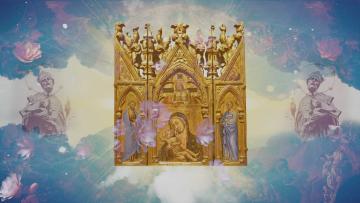Saint Patrick

Uncover Hidden Saints meanings
Patrick is among the saints that have the most unique history in that, he is associated with two identities.
The traditions that were linked with Saint Patrick used to be attached to Palladius who is claimed to have been sent by the pope to the Irish Christians back in the year 431, in Ireland there other clerics who used to administer the church.
He was not sent to the Irish so as to convert them but rather to be in charge of the already established churches in Ireland at the time.
Requesting petitions for the following:
- Money luck.
- Wealth.
- Spiritual help.
- Feast: 17-Mar
- Day: Sunday
- Candle/Emblem: White. Shamrock and Snakes
- Matters concerning: Against snakebite, for prosperity, luck, guidance, and spiritual wisdom. Patron Saint of Ireland
Claims of Irish roots
The Irish have several stories that mention the saint and too do have several practices and social events that have been attributed to the saint. A renowned Irish folk teller named Jenny Butler has highlighted how the traditions have received several new meanings all over the world; he has also explained the narratives have received recognition both in Ireland and outside.
The saint has been associated with a large number of Christian events and his character is depicted as comprehensive and multifaceted.
There is an excellent combination of Christian practices and traditional secular practices and this makes saint Patrick a subject to be discussed in that some of the practices that relate to him have been manipulated with time and ended up so. As time goes by, Saint Patrick gets the association with the Roman Catholic church of Ireland
The modern significance of Saint Patrick
On 17th March, a popular ceremony that is known as Saint Patrick’s Day is celebrated to mark the day that Saint Patrick died. In the universal church, the day was included as a result of its profound influence on Luke Wadding who a Franciscan Scholar was born in Waterford. He was a member of the commission that was implementing the reform of Breviary early in the 17th century.
In the first millennium, canonization was quite ordinary and done even at the regional levels which were equivalent to the modern day dioceses. The declaration for sainthood was usual when a person died; the church would then decide and declare him or her a saint.
This would result in their liturgical celebration as saints. This is the reason for the lack of a formal canonization for the saint by the Roman Catholic Church. Regardless of that, quite a good number of churches believe that Saint Patrick is already in heaven with Jesus and thus regard him a saint.
Saint Patrick is highly honored by several people all over the world with the most notable one being the feast day to mark his sainthood that has been included in the Liturgical calendar of the Episcopal Church in the United States. On the 17th of March, Saint Patrick is usually commemorated as a saint in the Orthodox Church more so by the English speaking citizens of the United Kingdom, Ireland and the northern American states. Various icons of the saint are available all over the world.
By Florance Saul
Aug 17, 2012







